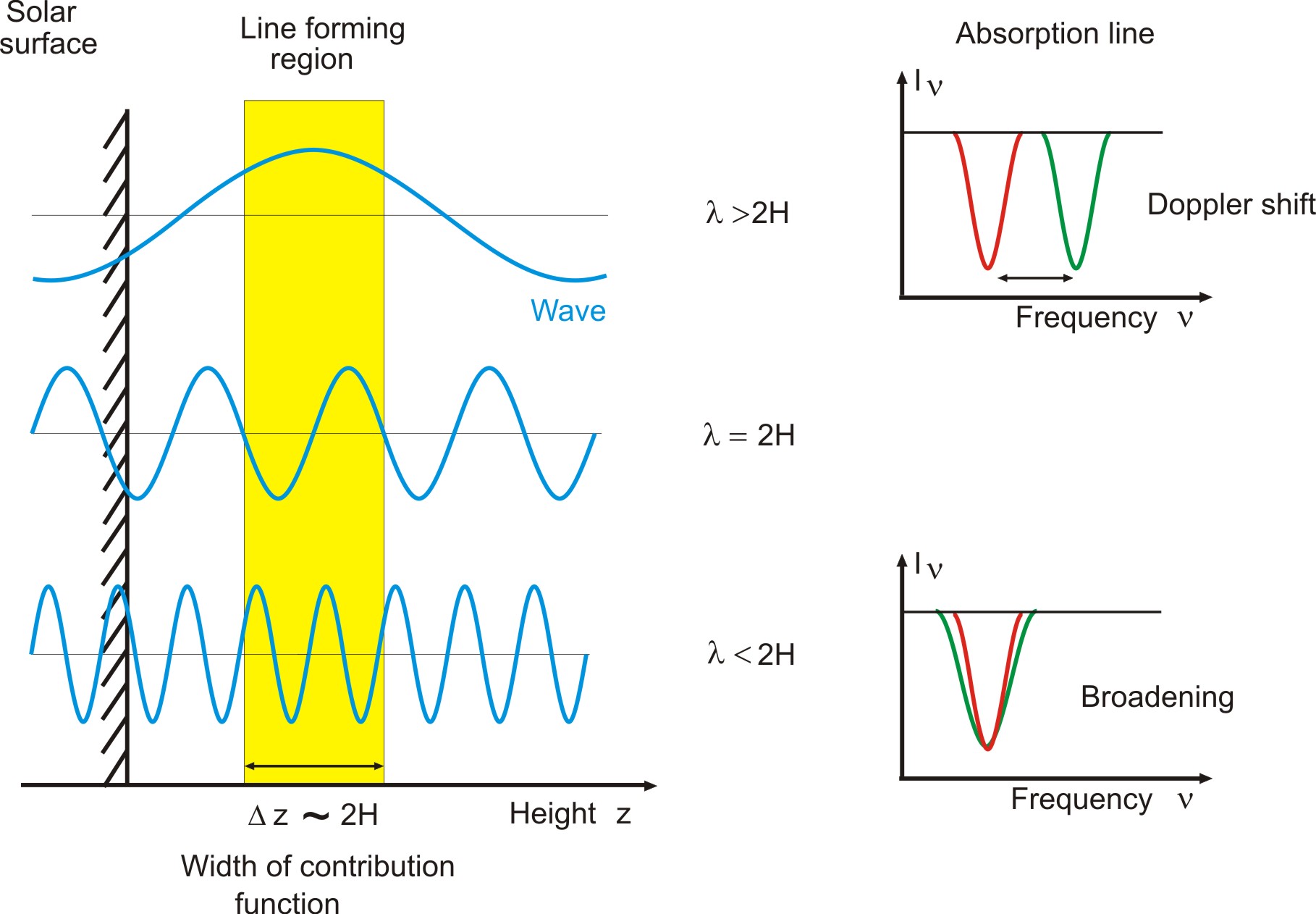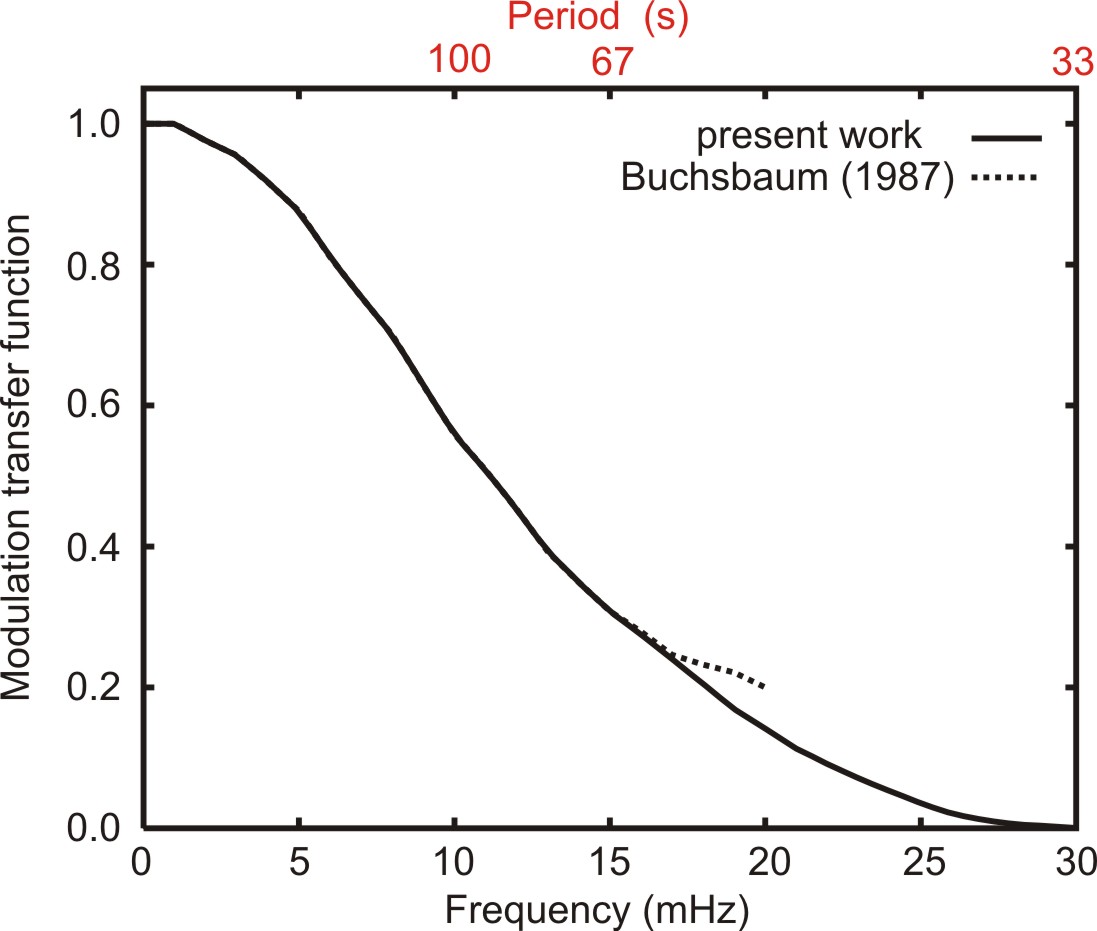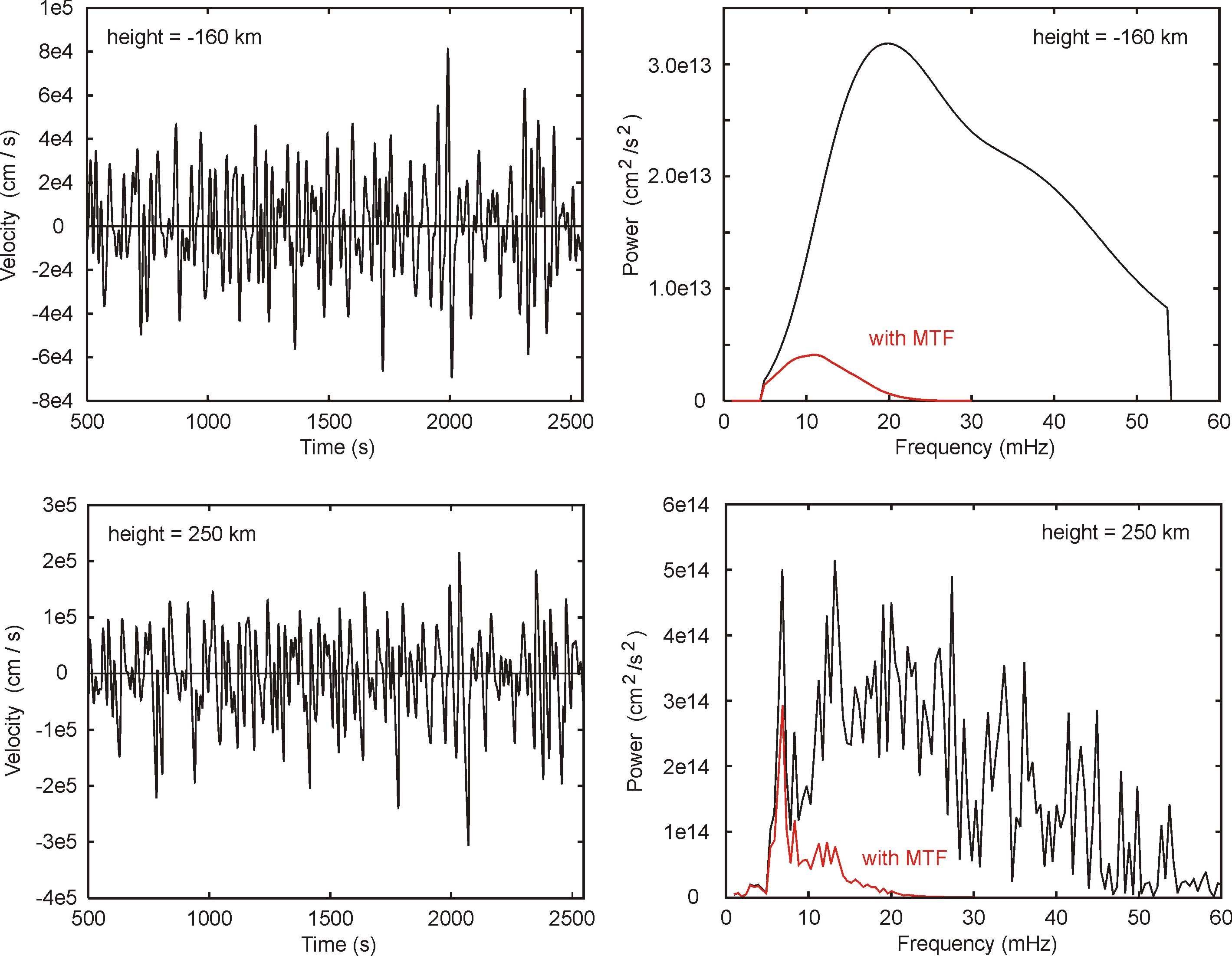
When comparing velocity and intensity fluctuations in spectral lines with theoretical acoustic spectra, an important effect must be considered. Velocity fluctuations can only be measured using spectral lines and by observing the Doppler effect (frequency fluctuations) in the absorption core of the line (Fig. 14). Strong lines form at great height and weak lines near the solar surface. If one wants to measure the velocity spectrum of acoustic waves produced in the convection zone one thus takes for instance a weak Fe line as it probes the deepest layers close to the convection zone. However, the formation even of weak lines requires a height interval over which the line contribution function is significant. This width is about two scale heights Delta z = 2 H approx 300 km. When the wavelength of the acoustic waves is smaller than Delta z, then the line core does no longer show frequency fluctuations but only line broadening.

Fig. 14 Acoustic waves of different frequency propagate through the line forming region of a weak Fe line. The observed Doppler fluctuations depend on the ratio of the wavelength and the width of the line forming region

Fig. 15 The modulation transfer function gives the fraction of the velocity amplitude (the ratio of the observed to the actually present amplitudes) that can be observed of acoustic waves of various frequencies. Due to the finite extent of the line-formation region there is a certain frequency above which the waves can no longer be detected, after Theurer, Ulmschneider & Kalkofen (1997)
Assume that acoustic waves of different periods but with the same velocity amplitude (energy flux) are present on the Sun. What would we observe? This question is answered by the modulation transfer function MTF (Fig. 15) which tells how much of the velocity amplitude of a given wave frequency nu = 1/period can be observed. One finds (Endler & Deubner 1983) that waves with periods of less than about 44 s (= 2H/c_S = 300/7 with a sound speed of c_S = 7 km/s) or frequencies higher than roughly nu = 23 mHz cannot be observed because of the mentioned principal reasons. Figure 15 shows that even the velocity amplitudes of waves below this frequency are strongly reduced. We applied this MTF concept to our wave generation calculations and simulated the acoustic spectrum that might be observed from Earth. Figure 16 shows a calculation where the acoustic wave spectrum computed in the solar convection zone at -160 km height is followed upwards to the height of 250 km (Musielak, Rosner, Stein & Ulmschneider 1994, Theurer, Ulmschneider & Kalkofen 1997) where observations of a low lying Fe line have been reported. Applying the MTF to the original spectrum and to the spectrum at 250 km height (red) shows that less than 10% of the actually present wave energy can be observed in the Fe line. Using only the observed power, the mechanical heating of the chromosphere would be greatly underestimated. In addition the observed low-frequency spectrum would predict only long period type phenomena, that is, the chromosphere would appear to be dominated by solitary long-period (3 min) type shock waves. Such strong single shocks are present in the solar chromosphere because the true acoustic spectrum contains these long period components, but they are not the only phenomena.

Fig. 16 Acoustic wave fluctuations and acoustic spectrum computed in the convection zone at the height -160 km (top). Velocity fluctuations and the spectrum after propagation of the wave to the height 250 km (bottom). At each height the spectrum after applying the MTF is shown in red, after Theurer, Ulmschneider & Kalkofen (1997)


